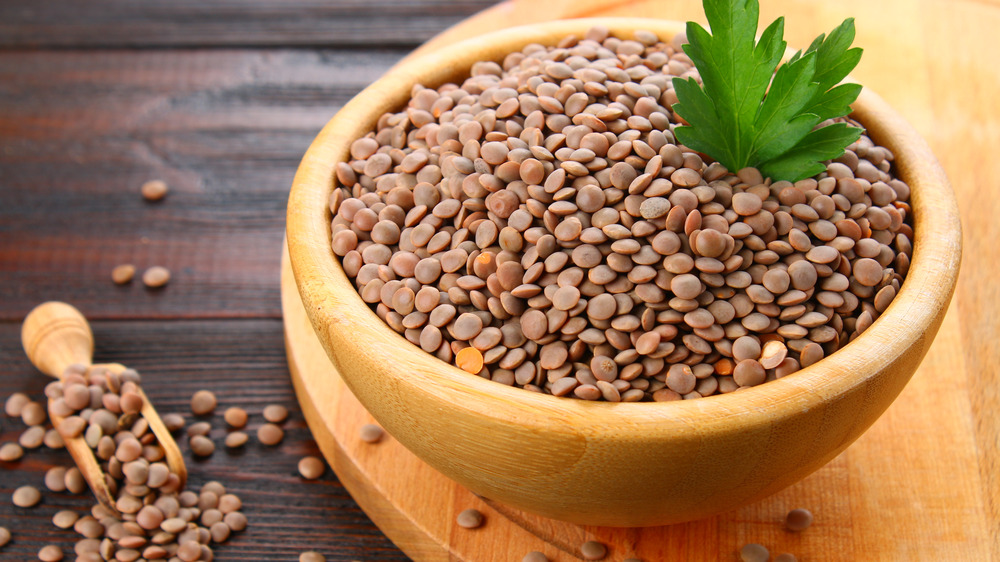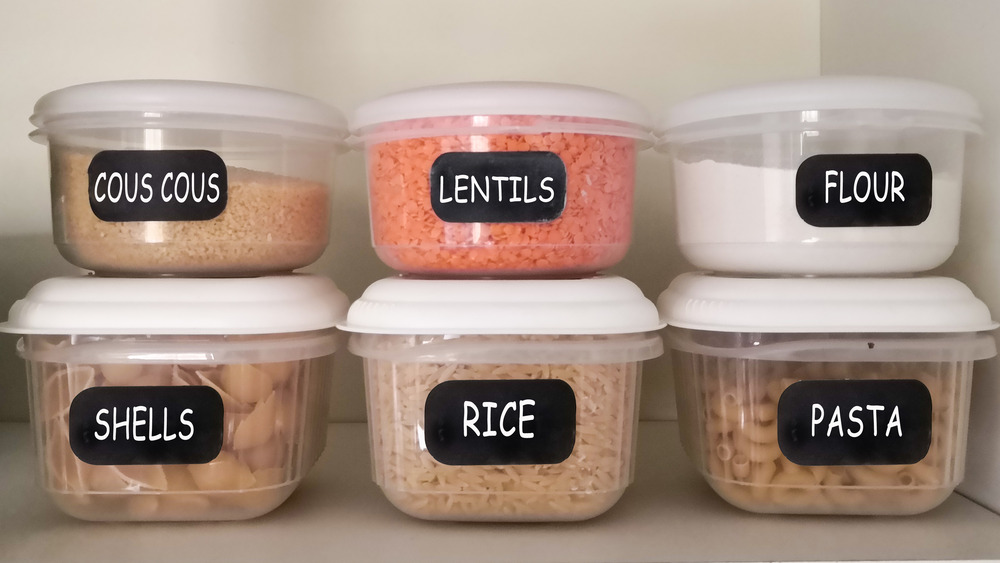This Is The Best Way To Store Lentils
Who doesn't have a half-empty bag of lentils sitting in their pantry? While valuable because of their long shelf life, there is a right and a wrong way to store lentils.
As Cook's Illustrated points out, the uses for lentils are many and versatile: soups and stews, tossed in salads or added to rice pilaf, or paired with sausage, pork, fish, or other proteins.
Lentils are a staple of cuisines throughout the Middle East and the Mediterranean, and they have been widely adopted all over the world. If you're not already eating them regularly, lentils deserve a place in your diet. Also known as pulses, these small "power-legumes," as MasterClass calls them, are inexpensive, gluten-free, and deliver 12 grams of protein in just a half-cup serving. Although available supermarkets, if you're looking to branch out a little, your local specialty stores will offer a broader selection of brands and varieties.
Lentils come in four general types. Yellow, orange, and red are nutty and sweet. Red and orange lentils are just yellow lentils that cook to a soft texture very quickly because they are pre-hulled and split, according to MasterClass. For this reason, they're often used as a thickener. Green lentils and French lentils have a peppery flavor and hold up well to cooking. The most common lentils, brown, are relatively quick-cooking, firm, and have a mild flavor. Black lentils (or "Beluga" lentils, owing to their resemblance to caviar) are small and have an earthy flavor similar to black beans.
Keeping lentils fresh
Astonishingly, humans have been eating lentils since as early as 8000 BC, according to NPR. There is evidence of the ancient Egyptians, Romans, and Greeks cultivating the hardy, drought-resistant plants for food. Lentils' ability to be stored for long periods of time is one of the reasons this legume has endured as a staple for centuries, particularly when and where food was scarce.
However, there is a way to store your lentils to ensure their freshness and flavor. Dried lentils should be stored to keep air, light, moisture, and insects out: In a sealed bag or airtight container and in a dark cupboard or pantry, according to Saskatchewan Pulse Growers. Beans & Lentils recommends purchasing a vacuum sealer for lentils and other foods you want to protect from air and moisture as well as insects. The Spruce Eats advises discarding dried lentils that have been exposed to moisture. The color of your dried lentils might fade over time, even if stored correctly. Although they might be slightly less flavorful, these lentils are still very much edible.
Cooked lentils or lentil puree, says the Saskatchewan group, can be refrigerated for up to a week. They can also be frozen, but are best used within three months. As you would store them in your pantry, seal your cooked lentils in plastic bags or another air-tight container to avoid freezer burn.

